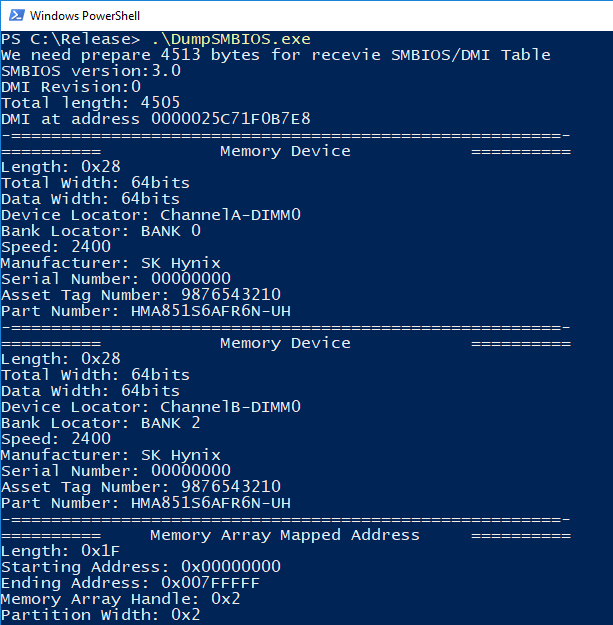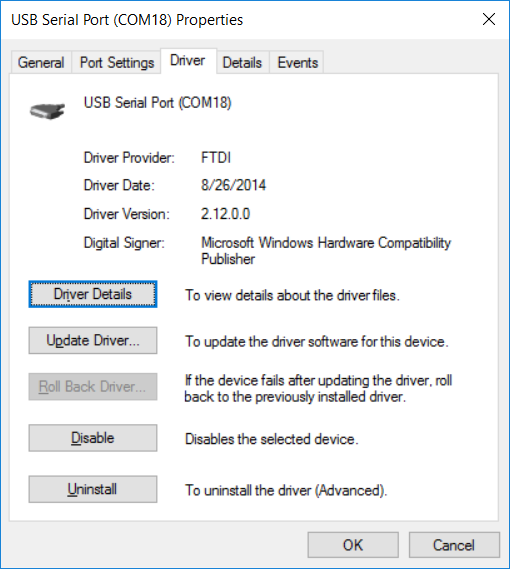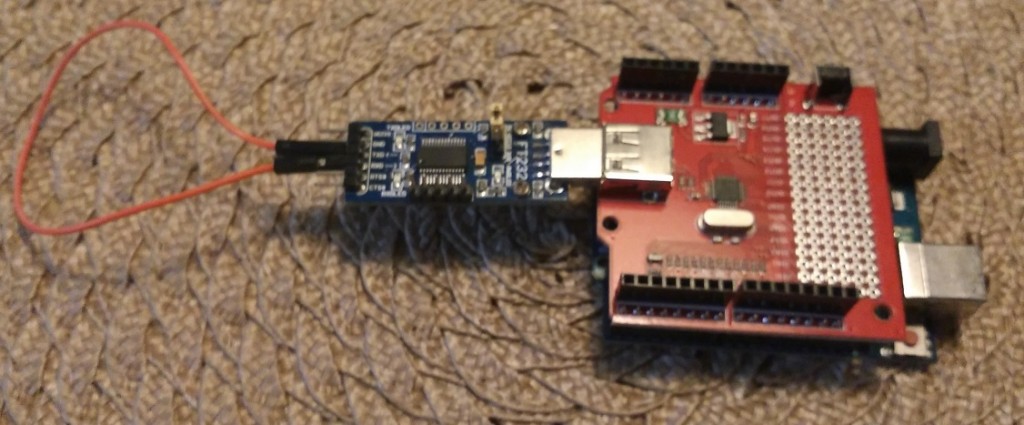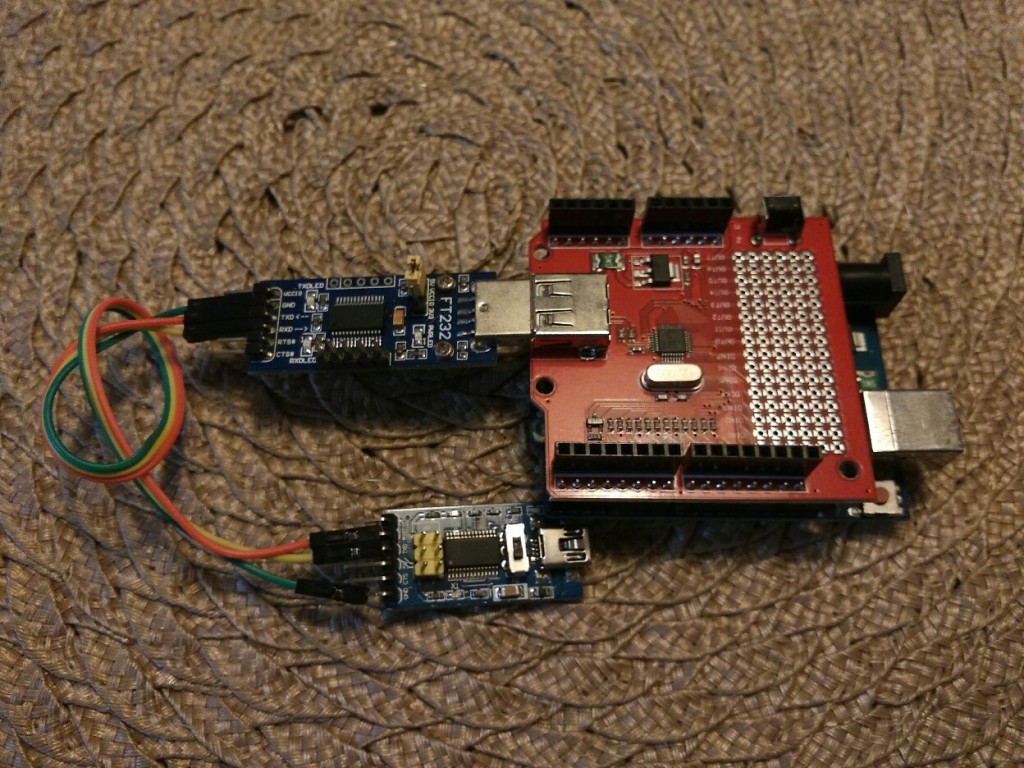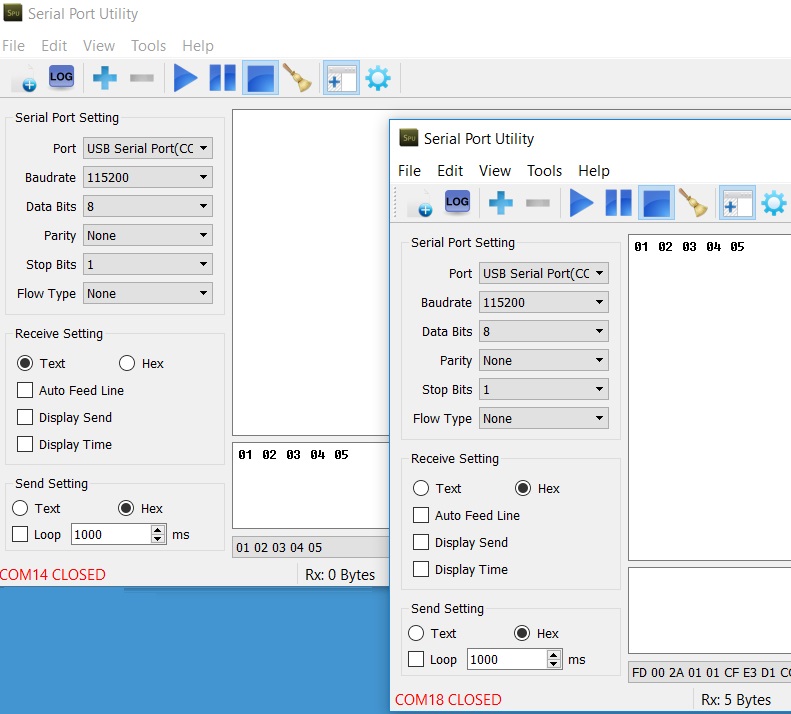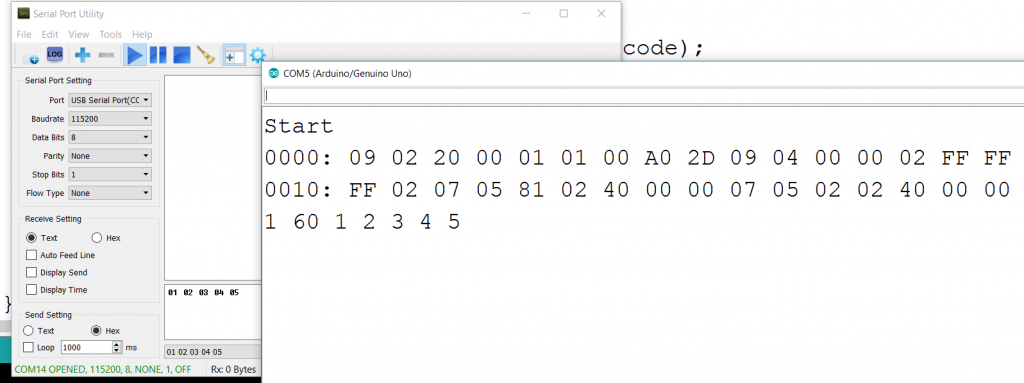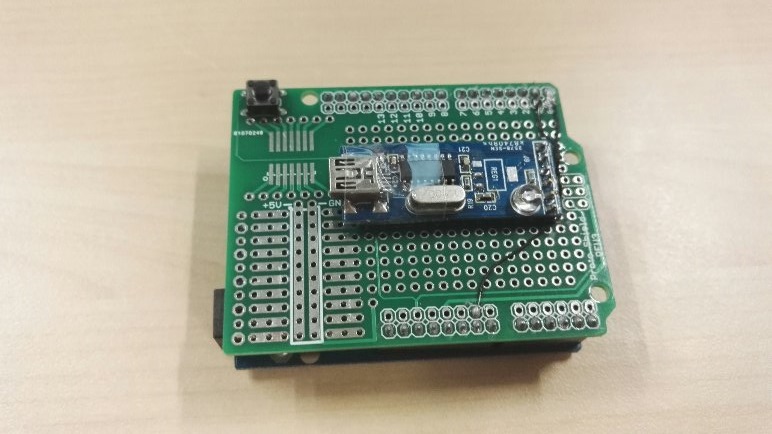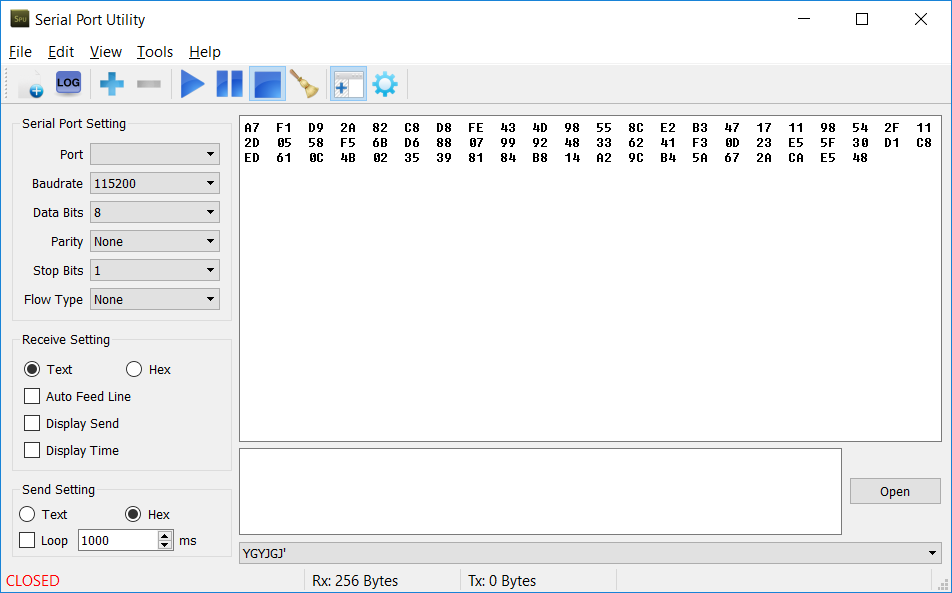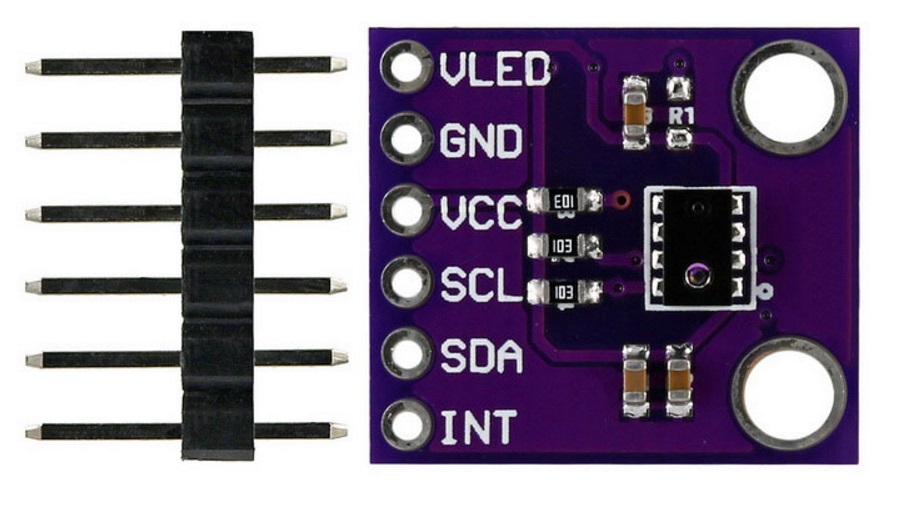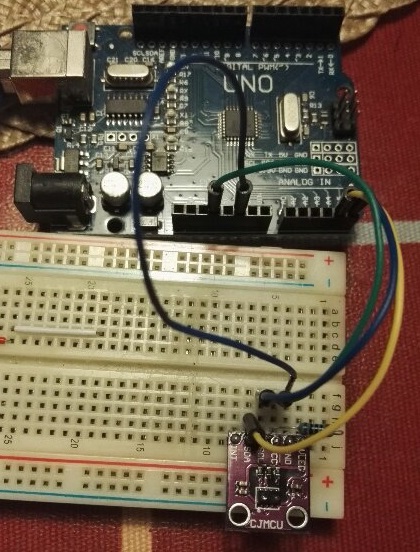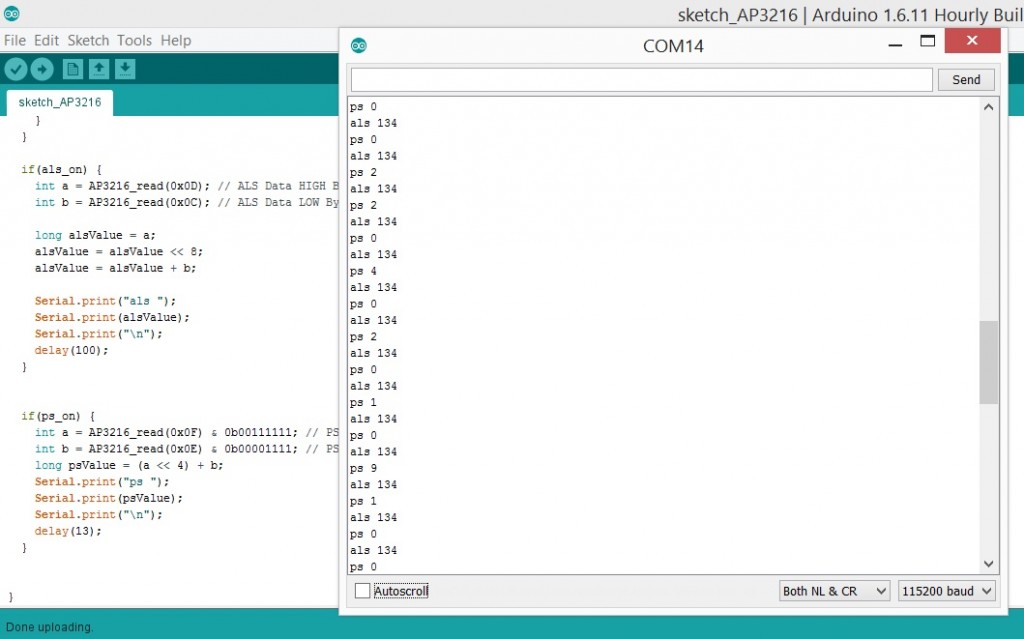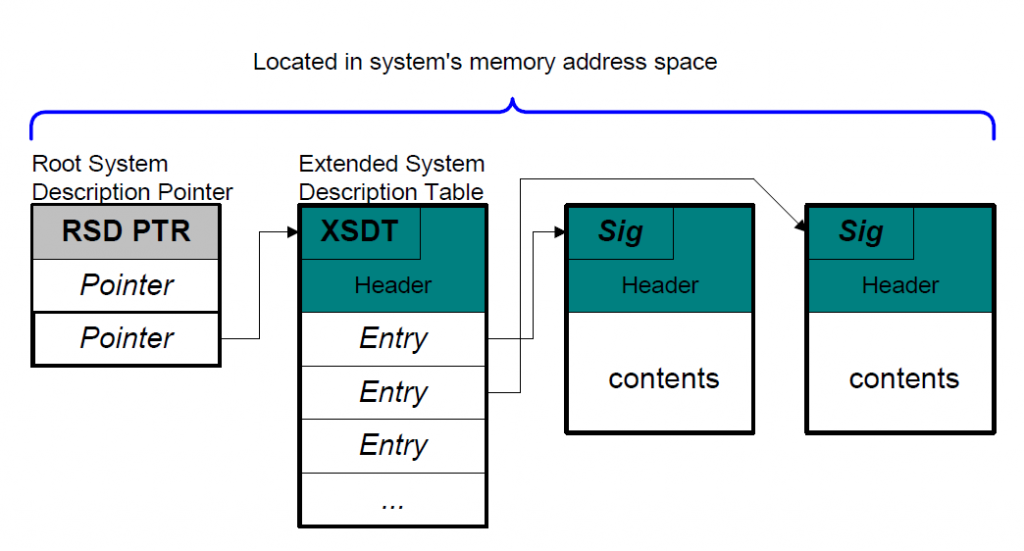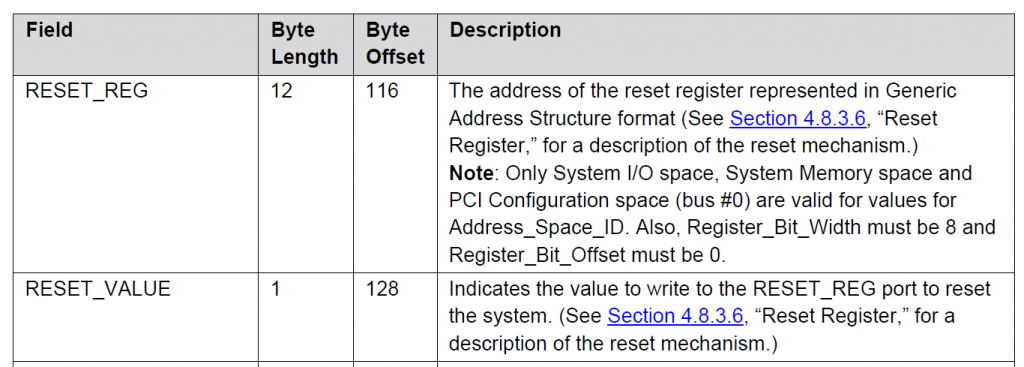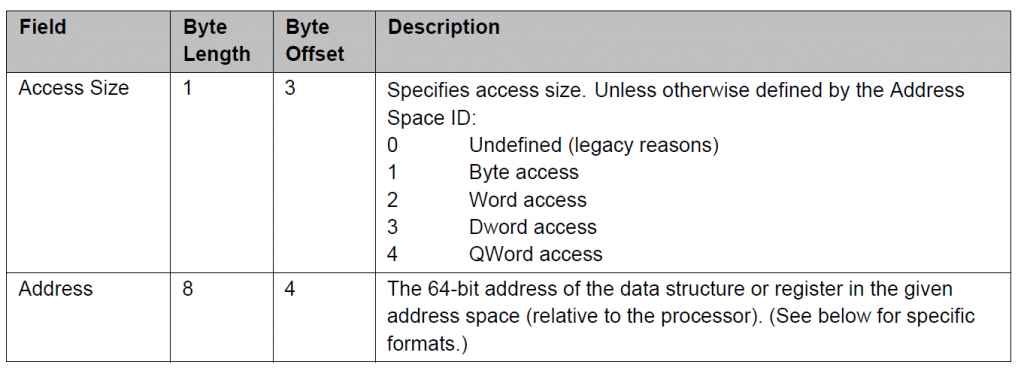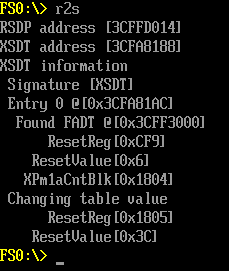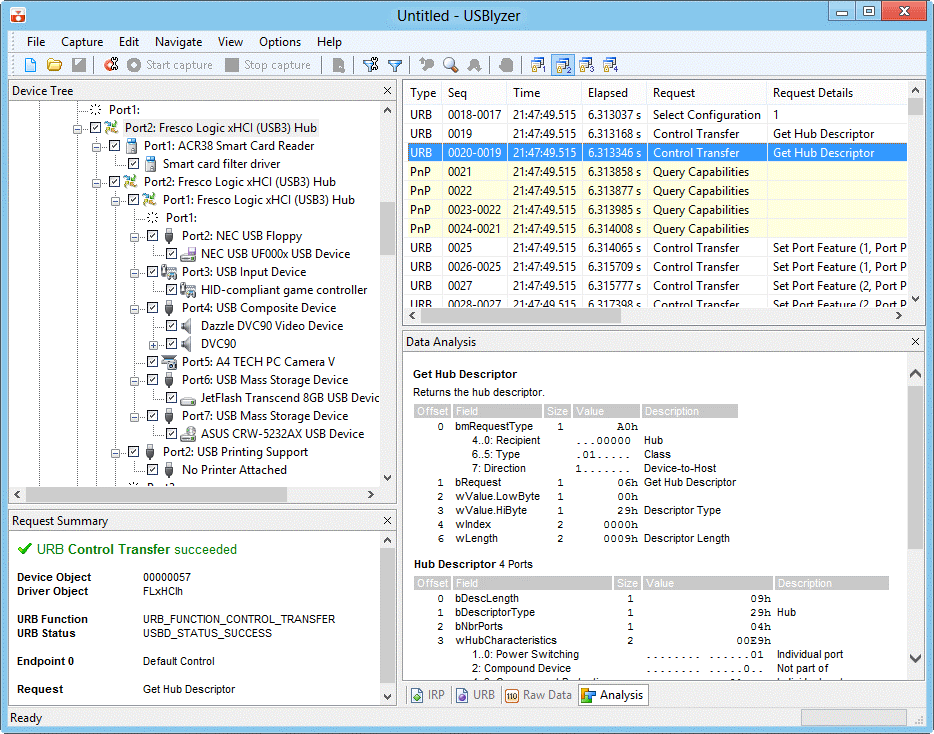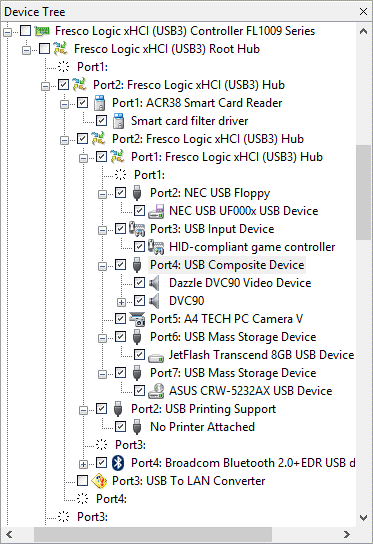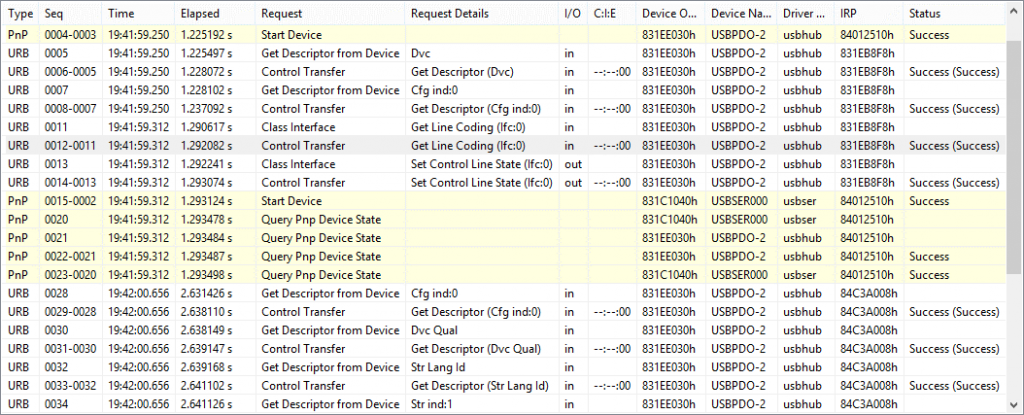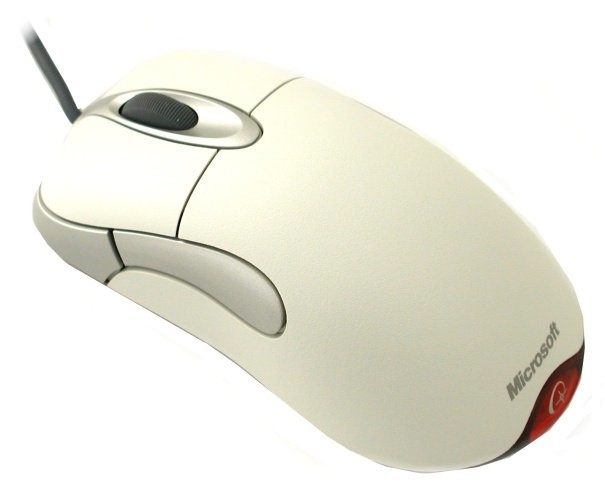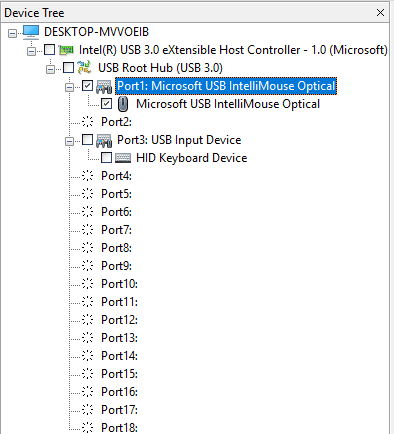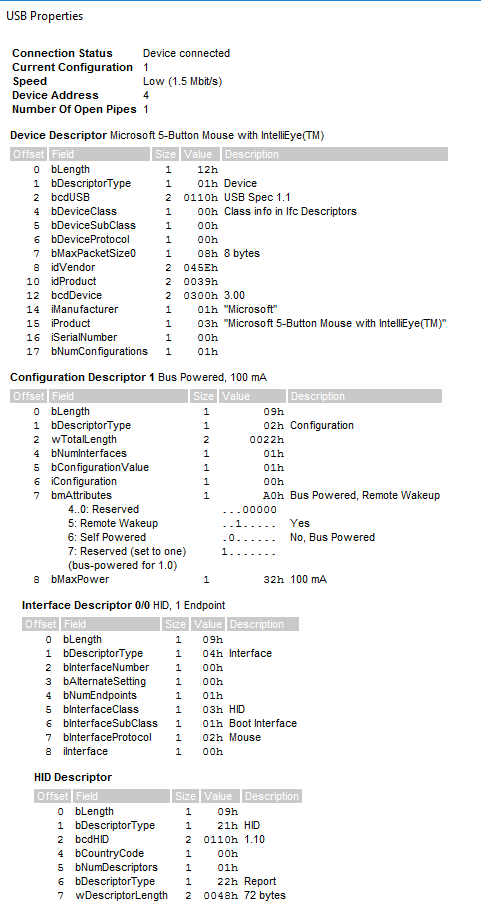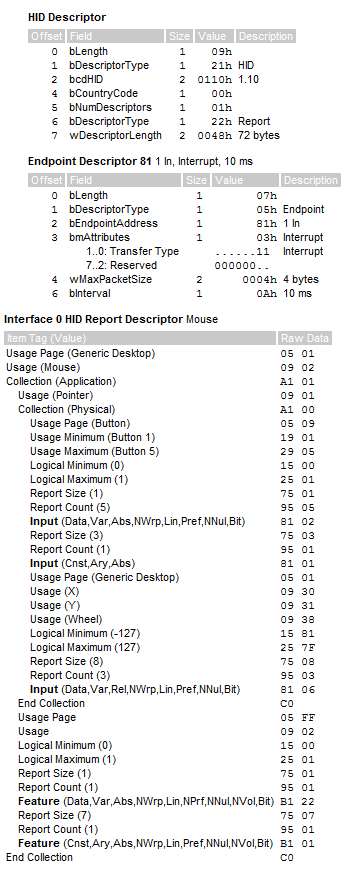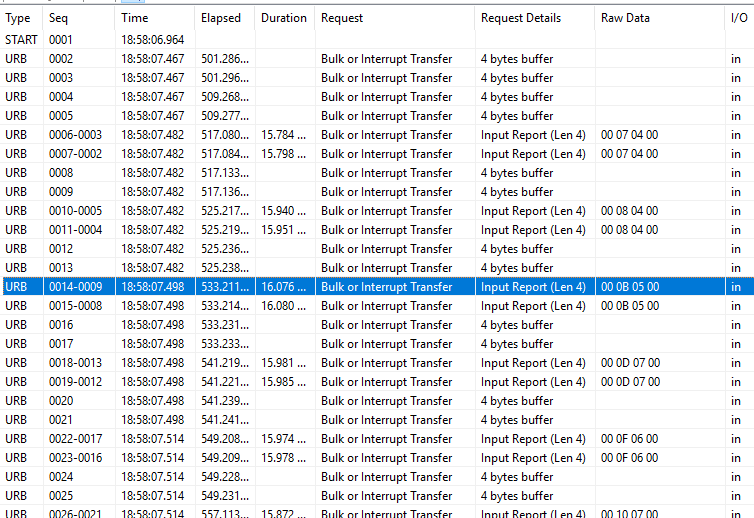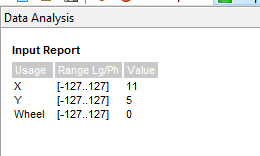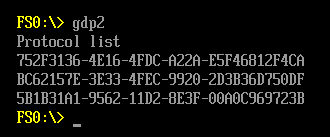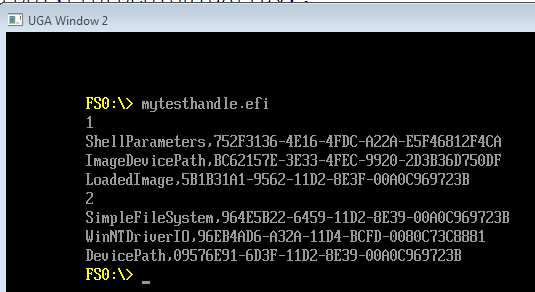最近我在查看一款鼠标的 HID 描述符时,遇到一个定义 AC Pan 搞不清楚意思:
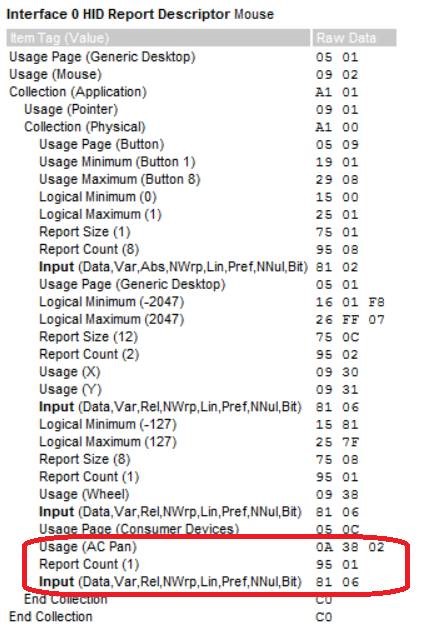
直接看 USB HID协议上面解释也比较简单,看不懂

鼠标是最普通的款式,上面有三个按键,左右已经滚轮下面的一个按键,此外就只有滚轮了。当然我也没有找到发出 AC Pan 的方法。
想来想去可以使用 Leonardo 来进行验证,把这个值发出来看看系统有什么变化,也能了解功能。
为此,特地修改 Arduino 鼠标的描述符,在 \libraries\Mouse\src\Mouse.cpp 中加入 AC Pan。
static const uint8_t _hidReportDescriptor[] PROGMEM = {
// Mouse
0x05, 0x01, // USAGE_PAGE (Generic Desktop) // 54
0x09, 0x02, // USAGE (Mouse)
0xa1, 0x01, // COLLECTION (Application)
0x09, 0x01, // USAGE (Pointer)
0xa1, 0x00, // COLLECTION (Physical)
0x85, 0x01, // REPORT_ID (1)
0x05, 0x09, // USAGE_PAGE (Button)
0x19, 0x01, // USAGE_MINIMUM (Button 1)
0x29, 0x03, // USAGE_MAXIMUM (Button 3)
0x15, 0x00, // LOGICAL_MINIMUM (0)
0x25, 0x01, // LOGICAL_MAXIMUM (1)
0x95, 0x03, // REPORT_COUNT (3)
0x75, 0x01, // REPORT_SIZE (1)
0x81, 0x02, // INPUT (Data,Var,Abs)
0x95, 0x01, // REPORT_COUNT (1)
0x75, 0x05, // REPORT_SIZE (5)
0x81, 0x03, // INPUT (Cnst,Var,Abs)
0x05, 0x01, // USAGE_PAGE (Generic Desktop)
0x09, 0x30, // USAGE (X)
0x09, 0x31, // USAGE (Y)
0x09, 0x38, // USAGE (Wheel)
0x15, 0x81, // LOGICAL_MINIMUM (-127)
0x25, 0x7f, // LOGICAL_MAXIMUM (127)
0x75, 0x08, // REPORT_SIZE (8)
0x95, 0x03, // REPORT_COUNT (3)
0x81, 0x06, // INPUT (Data,Var,Rel)
//LABZ_DEBUG_Start
0x05, 0x0c, // USAGE_PAGE (Consumer Devices)
0x0a, 0x38, 0x02, // USAGE (AC Pan)
0x15, 0x81, // LOGICAL_MINIMUM (-127)
0x25, 0x7f, // LOGICAL_MAXIMUM (127)
0x75, 0x08, // REPORT_SIZE (8)
0x95, 0x01, // REPORT_COUNT (1)
0x81, 0x06, // INPUT (Data,Var,Rel)
//LABZ_DEBUG_End
0xc0, // END_COLLECTION
0xc0, // END_COLLECTION
};
当然,做了上面的修改之后,每次发出的消息不再是4个Bytes(Button,X,Y,Wheel),而多了一个。相应的下面的函数也要进行修改,多发出一个 Pan值。
void Mouse_::move(signed char x, signed char y, signed char wheel,signed char pan)
{
uint8_t m[5];
m[0] = _buttons;
m[1] = x;
m[2] = y;
m[3] = wheel;
m[4] = pan;
HID().SendReport(1,m,5);
}
修改好库之后,再编写一个测试代码,使用 Pin 7 8 拉低来发出 Pan -1 和 +1
#include <Mouse.h>
// set pin numbers for the five buttons:
const int upButton = 2;
const int downButton = 3;
const int leftButton = 4;
const int rightButton = 5;
const int mouseButton = 6;
const int pan1 = 7;
const int pan2 = 8;
int range = 5; // output range of X or Y movement; affects movement speed
int responseDelay = 10; // response delay of the mouse, in ms
void setup() {
// initialize the buttons' inputs:
pinMode(upButton, INPUT_PULLUP);
pinMode(downButton, INPUT_PULLUP);
pinMode(leftButton, INPUT_PULLUP);
pinMode(rightButton, INPUT_PULLUP);
pinMode(mouseButton, INPUT_PULLUP);
pinMode(pan1, INPUT_PULLUP);
pinMode(pan2, INPUT_PULLUP);
// initialize mouse control:
Mouse.begin();
}
void loop() {
// read the buttons:
int upState = digitalRead(upButton);
int downState = digitalRead(downButton);
int rightState = digitalRead(rightButton);
int leftState = digitalRead(leftButton);
int clickState = digitalRead(mouseButton);
// calculate the movement distance based on the button states:
int xDistance = (leftState - rightState) * range;
int yDistance = (upState - downState) * range;
// if X or Y is non-zero, move:
if ((xDistance != 0) || (yDistance != 0)) {
Mouse.move(xDistance, yDistance, 0,0);
}
if(digitalRead(pan1)==LOW) {
Mouse.move(xDistance, yDistance, 0,1);
Mouse.move(0, 0, 0,0);
}
if(digitalRead(pan2)==LOW) {
Mouse.move(xDistance, yDistance, 0,-1);
Mouse.move(0, 0, 0,0);
}
// if the mouse button is pressed:
if (clickState == HIGH) {
// if the mouse is not pressed, press it:
if (!Mouse.isPressed(MOUSE_LEFT)) {
Mouse.press(MOUSE_LEFT);
}
}
// else the mouse button is not pressed:
else {
// if the mouse is pressed, release it:
if (Mouse.isPressed(MOUSE_LEFT)) {
Mouse.release(MOUSE_LEFT);
}
}
// a delay so the mouse doesn't move too fast:
delay(responseDelay);
}
最终的实验表明, AC Pan 是类似水平方向的滚轮,在使用 Excel 这样的软件经常需要水平方向的滚动用这个功能会很方便。
修改后的完整库下载:
Mouse
